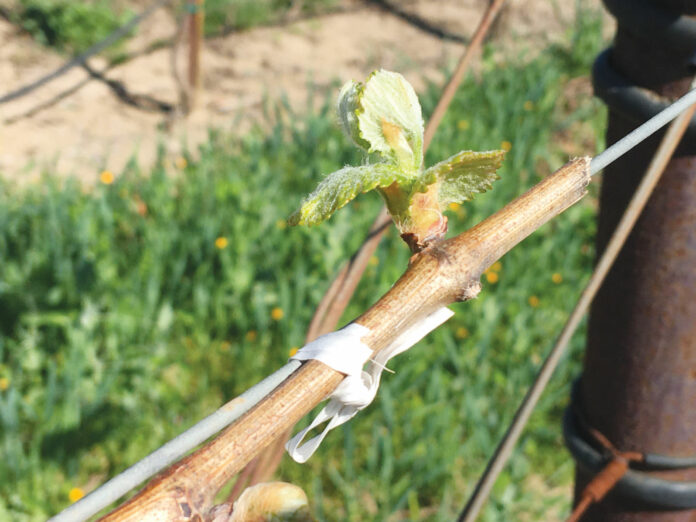
Warm, dry February making way for a wetter March
February’s warm weather woke up lots of grapevines a month ahead of normal “bud break” season. This puts growers on extended frost watch alerts during approaching cold nights as the record-dry February is now turning to a March period which is promising the return of rains, possibly as early as this weekend.
“Bud break” is when dormant vines begin a new growth cycle where the vine tips swell with new green growth and the first tiny leaves pop open. The tender new growth is very susceptible to frost and freezing night temperatures which can damage or kill the budding leaflets. Most growers us overhead water sprayers to mitigate the frost danger by encasing the young vines in a protective ice coating. Very large, mounted fan machines are also used.
The warm and rainless February is also presenting additional alarms to local vineyard owners and other farmers. Although private water reservoirs and Lake Sonoma and Lake Mendocino are full or near capacity, worries about a possible drought are being whispered. The most recent below-normal snow measurements (only 50%) in the Sierra Nevada mountains isn’t helping.
The drought worries should be answered soon by predictions of an “above normal” wet period over Sonoma County, predicted for mid-March and extending into mid-April. “It’s not quite a Miracle March (very rainy) but there are some signs of something like one,” said meteorologist Will Farr, of Western Weather Services which provides weather forecasting and other services to Sonoma County Winegrowers members. “We think the rains will be 1 ½ to 2 inches above normal.” (Average March rainfall is 4-6 inches.)
Frost risks also will be slightly above normal, depending on unpredictable wind patterns before and after the storms, according to Farr.
“Bud break is a welcome sign as long as weather remains mild,” said Duff Bevill, of Bevill Vineyard Management, based in Dry Creek Valley. “Once the buds pop, you’re vulnerable to frost.”
A February bud break is not too abnormal, but most years see the first early buds in mid-March, usually near St. Patrick’s Day. “This year is a little earlier than what our growers would call normal,” said Karissa Kruse, president of the Sonoma County Winegrowers. “It’s always exciting to the see the vines come out of dormancy and kick off the vintage.”
Wine Road Barrel Tasting visitors over the next two weekends (March 7-8 and 14-15) can help welcome the new vineyard growth, but should keep umbrellas handy.
February’s record “zero rain” was caused by a massive high pressure ridge over the Pacific Ocean, 500 to 1,000 miles from the California coast. “That shot all the storms way north into the Northwest and down into the Great Basin, missing Sonoma County and staying east,” said Farr.
Off-shore winds from the north kept February days warmer than average, but nights remained cold due to the lack of a moderating marine layer, he added.
The over-dominant weather pattern of February is beginning to change with the storm path now set to move more directly over northern California and Sonoma County.
Asked about a 90-day forecast, Farr said, “I’m not really trusting that far out right now, but our 45-day forecast definitely sees a wetter period coming our way.”
Besides viewing and archiving NOAA satellite’s lower atmosphere tracking, Western Weather has 60 weather stations installed in Sonoma County vineyards and in the Russian River basin. The local rain season begins Oct. 1 and the average season total at the end of February is usually 28 inches. This year rainfall totals are below 50% of normal. In Healdsburg the total is 12.18 inches, 19.02 in Cloverdale, 18.48 in Windsor and 15.90 in Sebastopol. On the coastal ridge at Cazadero where the average rainfall to date should be 50 inches, only 18 inches has been measured so far.







